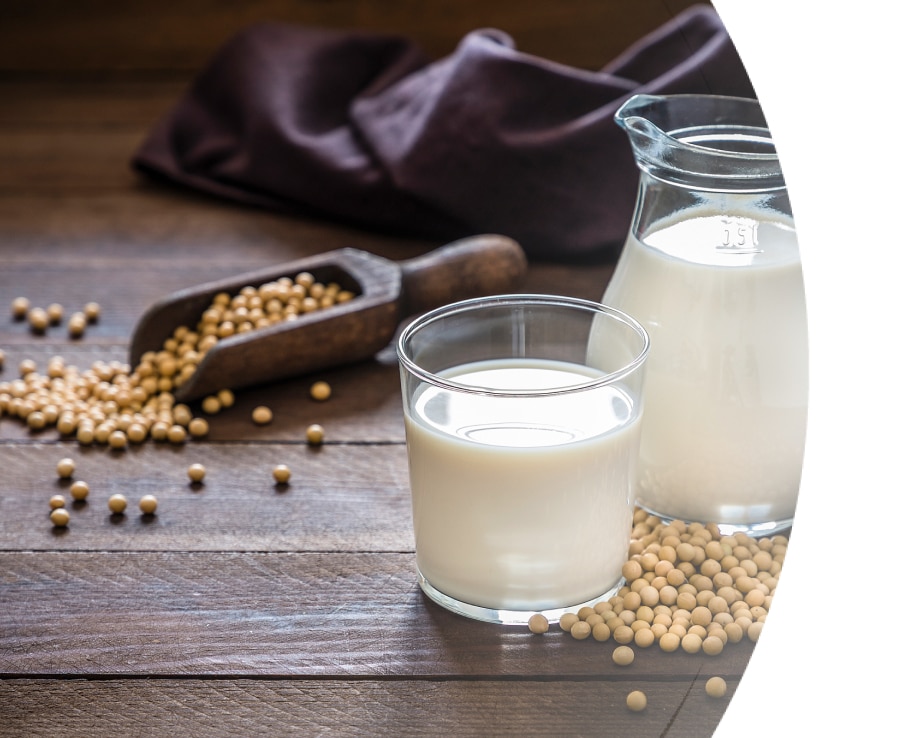Living with a GI
Disorder
Learn about a few reasons
someone may have GI
impairment.

A healthy diet is a little different for each person, and is dependent on your own baseline health and physical challenges.
Whatever the healthy diet is for each individual, the goal remains the same: giving your body the nutrients it needs every day, including protein, fat, carbohydrate, vitamins, minerals and fluids, to provide optimum health.
Maintaining a healthy diet is important for everyone, but it is crucial for people with an acute or chronic illness, including those who are experiencing certain medical treatments, recovering from surgery or experiencing unwanted weight loss.
Digestion is when food moves through the body and gets broken down into smaller pieces, and nutrients are absorbed in the digestive system for energy and repair.
MACROnutrients:
MICROnutrients:
Both macronutrients and micronutrients work together to maintain overall health.

Protein helps build and maintain tissues in the body. Muscles, organs and the immune system are made up primarily of protein. Some examples of protein-rich foods in a regular diet are meat, chicken, fish, beans, milk, and eggs. Protein is also one of the fundamental elements of tube feeding formulas.
Common types of protein sources in tube-feeding formulas are:
Carbohydrates are a vital part of overall nutrient intake and are the body’s main fuel source. The three major types of carbohydrates include starch, sugar and fiber.
The primary carbohydrate in Peptamen® formulas is corn maltodextrin. Maltodextrin is starch that has been broken down into small units that are easy to digest and absorb, making it a quick source of energy. Maltodextrin is an excellent source of carbohydrates for liquid formulas, as it mixes well with other ingredients without increasing the overall thickness or viscosity of the formula.


Fats provide energy and essential fatty acids. The fat in Peptamen® products consists of vegetable oils such as soybean oil, canola oil, safflower oil and fish oil, containing long chains of fat molecules called long chain triglycerides or LCTs. These fats provide essential fatty acids that your body cannot produce. Essential fatty acids are essential to proper functioning of the body.
Another very important type fat in Peptamen products is called medium chain triglycerides, or MCTs. MCTs are fats made from coconut and palm kernel oils and consist of shorter chains of fats. Though MCTs don’t provide essential fatty acids, they are an important source of energy. Advantages of MCTs are as follows:
All Peptamen formulas feature a blend of both LCTs and MCTs to help ensure you’re getting the nutrition your body needs.
All of our Peptamen family of formulas are made with 100% whey protein. Whey is that nutrient-rich liquid part of milk and it’s one of the very best dietary sources of high-quality protein. The whey protein in Peptamen formulas has been broken down into small protein fragments called peptides that are emptied from the stomach into the small intestine where they are absorbed very easily by the body. Because it is a high-quality protein, whey protein helps maintain and build healthy tissues throughout the body.
How the Peptamen® Difference Works in the Body
Why Are Absorption and Tolerance Important?
Digestion, Absorption and Tolerance of Nutrition in People with GI Disorders
GI disorders may lead to maldigestion and malabsorption of food or tube feeding formula. Maldigestion occurs when the body does not properly break the food or formula down into small absorbable fragments or units. Malabsorption occurs when the small absorbable food fragments are not taken up by the GI tract and delivered to the blood stream. If food or tube feeding is not absorbed adequately, symptoms of maldigestion and malabsorption can occur, including diarrhea, stomach pain, and nausea. This may lead to malnutrition.
Feeding intolerance results from difficulty digesting certain foods or tube feeding formulas, manifested by GI symptoms such as diarrhea, stomach pain and nausea. Better digestion and absorption help prevent feeding intolerance.

Absorption takes place after digestion. It happens when digested or broken-down nutrients enter your blood stream from your GI tract. Simply put, your body needs to absorb



Tolerance means your body is accepting the nutrition it received, without symptoms of maldigestion and malabsorption

For adults and older children (age 14+) witih GI impairment, complete nutrition that's easy to absorb and digest.

For children ages 1-13 with GI impairment, complete nutrition that's easy to absorb and digest.